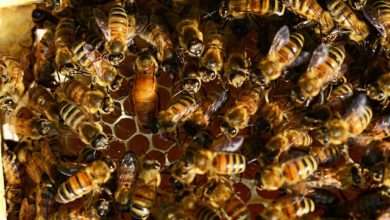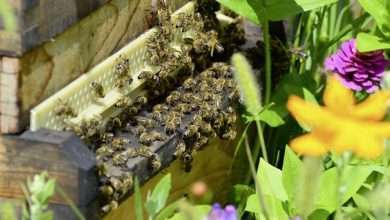What A Bee Sees – An Unusual Journey Through the Eyes of a Bee
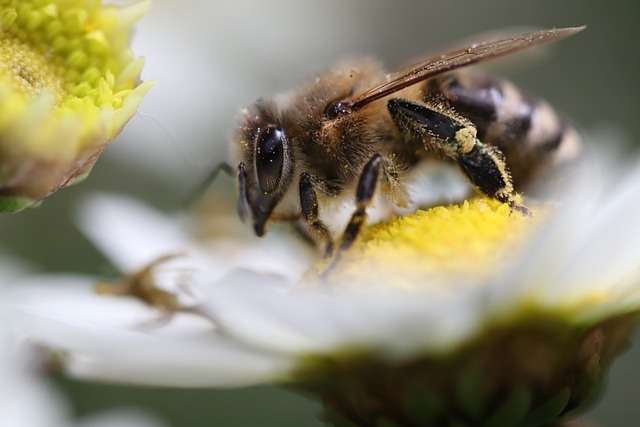
Have you ever wondered what a bee sees? There is no better way to get a glimpse into the world of a bee than through the eyes of a bee. This article will be an in-depth exploration into the vision of bees and how it helps them to exist in harmony with the environment. Through a deep dive into the anatomy and capabilities of bees, this article will allow us to explore the world through their eyes like never before.
Bees are small, hardworking insects that can often be found in gardens and fields. They play an important role in pollination, meaning that they’re responsible for propagating many fruits and flowers that we enjoy. Without bees, the world would be a much different place.
To understand how a bee sees the world, we must first delve into the anatomy of the eye. We will then explore how the bee’s eyes enable it to collect data for navigation and, finally, discover how bees use their unique vision to identify flowers and other sources of fuel.
The Anatomy of a Bee’s Eye
Have you ever wondered how bees navigate through nature with such precision? Well, it all comes down to their unique anatomy of their eyes. Understanding how a bee sees is vital as it helps us appreciate its role in the ecosystem and how we can better protect and preserve their habitats.
A bee’s eye is a remarkable piece of natural engineering, containing tiny structures that allow them to see the world in a way that humans cannot. Bees have two large compound eyes, which contain thousands of tiny lenses called ommatidia. These lenses work individually, capturing separate signals that the bee’s brain then uses to build a complete visual image of its environment.
Interestingly, the ommatidia have a hexagonal shape, which allows bees to detect polarized light used for navigation purposes. They can also see ultraviolet (UV) radiation that is invisible to humans. This unique ability helps them detect pollen-filled flowers, which typically absorb and reflect UV light differently than the leaves and stems of plants.
Why Understanding how a Bee Sees is important
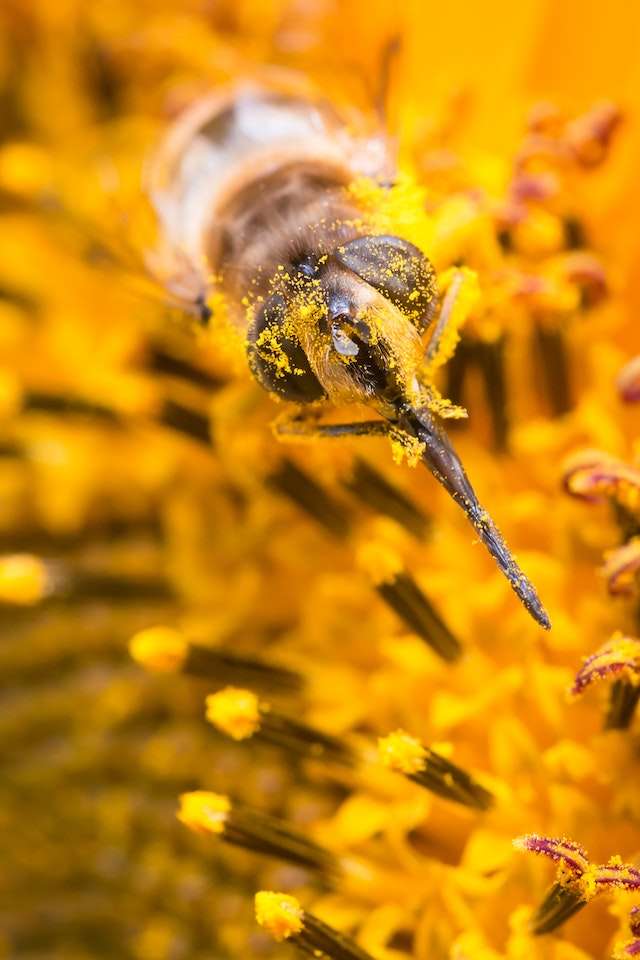
Understanding how bees see is crucial for several reasons. Firstly, bees play a vital role in pollinating the world’s crops, which are responsible for providing food for millions of people. By understanding how their unique eye structures work, we can design better and more effective ways to attract them to crops that require pollination.
Additionally, bees are essential in maintaining the diversity of ecosystems. They help to transfer pollen from one plant to another, contributing to the plant’s reproduction, and thus, the survival of various species.
How a Bee Sees
- Bee’s Vision Spectrum
Bees have a vision spectrum that differs from humans. While humans can see colors on a spectrum ranging from violet to red, bees see colors on a spectrum ranging from ultraviolet to yellow-green. This is because bees have three color receptors in their eyes, allowing them to detect ultraviolet light- which is invisible to humans.
Additionally, bees see the world in a mosaic style, making it easier for them to see movement and patterns.
- Polarization Patterns that Influence a Bee’s Flight
In addition to their unique spectrum of vision, bees also have the ability to see polarization patterns in the sky. These patterns help bees navigate during flight, allowing them to locate the position of the sun and communicate with other bees. By using polarization patterns, bees can better understand the distance and position of objects in their surroundings.
- How Bees Perceive Colors
As mentioned previously, bees see colors on a spectrum ranging from ultraviolet to yellow-green. While they can see the same colors as humans, they perceive them differently. For instance, a flower that appears blue to humans may appear purple or even invisible to a bee. This is because flowers that are confusing to humans may appear very distinct to bees due to their unique spectrum of vision.
- How Bees Navigate Their Surroundings
Bees are known for their incredible ability to navigate. Through the use of polarized light and their known environment, they can locate food sources, communicate with other bees in the colony, and identify landmarks. However, they do not have the luxury of having a map or GPS system to guide them. Instead, they rely heavily on their memory and pattern recognition skills. This is why bees are excellent at finding flowers in a large garden, despite the absence of any specific visual cue to the location of the flower.
Bee and Flower Communication
When we think of pollinators, bees are often the first to come to mind. These diligent insects play a critical role in pollinating our food crops and ensuring that our ecosystems remain healthy. But have you ever stopped to wonder how a bee actually sees the world around it, particularly when it comes to locating flowers?
- How bees use their vision to locate flowers
Bees have a remarkable visual system that allows them to home in on specific features of flowers that are attractive to them, such as color, shape, and pattern.
For starters, bees can see much more clearly than we can in the ultraviolet (UV) range of the spectrum, which allows them to perceive details that are invisible to us. They can also detect differences in polarization, meaning that they can tell how light waves are vibrating along different planes—a capability that helps them to navigate through complicated environments.
When bees approach flowers, they look for combinations of color and pattern that signal the presence of nectar and pollen—the two main rewards they are seeking.
In general, bees are most attracted to colors in the blue and violet range, which they perceive as especially bright and prominent. They are also partial to patterns that resemble circular or tubular shapes, since these suggest the presence of a nectar source.
- How bees are attracted to specific colors and patterns on flowers
Interestingly, different species of bees are attracted to different types of flowers, depending on their visual preferences.
For instance, bees that are active in the early spring tend to be most attracted to yellow flowers, while those that emerge later in the season are more drawn to blue and purple blooms. Some bees, such as honeybees, are also highly attuned to odor, which can give them additional clues about the location of nectar and pollen.
- What beekeepers can learn from the biology of bees and flowers
Understanding how bees perceive flowers can be incredibly helpful for beekeepers who are trying to manage their hives and ensure that their bees are well-fed.
By planting a variety of flowers that bloom at different times throughout the year and feature different colors and patterns, beekeepers can provide a diverse range of food sources that will keep their colonies thriving.
Additionally, since some bees are more attracted to certain flower types than others, beekeepers can strategically place their hives near the types of flowers that their bees prefer.
Challenges Bees Face
Bees play a crucial role in pollination, facilitating over 70% of global crop production. However, these vital pollinators face an array of challenges that threaten their existence. This chapter examines the primary threats facing bees.
- Threats Facing Pollinators
The world’s bee populations face a variety of threats that compromise their health and survival. These include:
1. Habitat loss: Agricultural expansion and urbanization have created a decline in bee habitats.
2. Climate change: A changing climate destabilizes ecosystems and alters flowering periods, which affects bees’ access to pollen and nectar.
3. Disease: Bees can suffer from diseases such as Varroa mite infestations and American Foulbrood, which weaken colonies and reduce their ability to forage.
4. Parasites: Parasites such as Nosema, a fungus that can impact bees’ digestive systems, can also threaten bee populations.
- The Impact of Pesticides on Bee Vision
The use of pesticides has risen in recent years to protect crops from pests and diseases. Unfortunately, these same pesticides can harm bees, particularly affecting their visual acuity.
1. Neonicotinoids: These pesticides can cause disorientation and loss of motor coordination in bees, leading to confusion and difficulty finding their way back to the hive.
2. Chlorpyrifos: This pesticide is known to affect bees’ vision, causing an abnormal protrusion of their eyes that can lead to blindness.
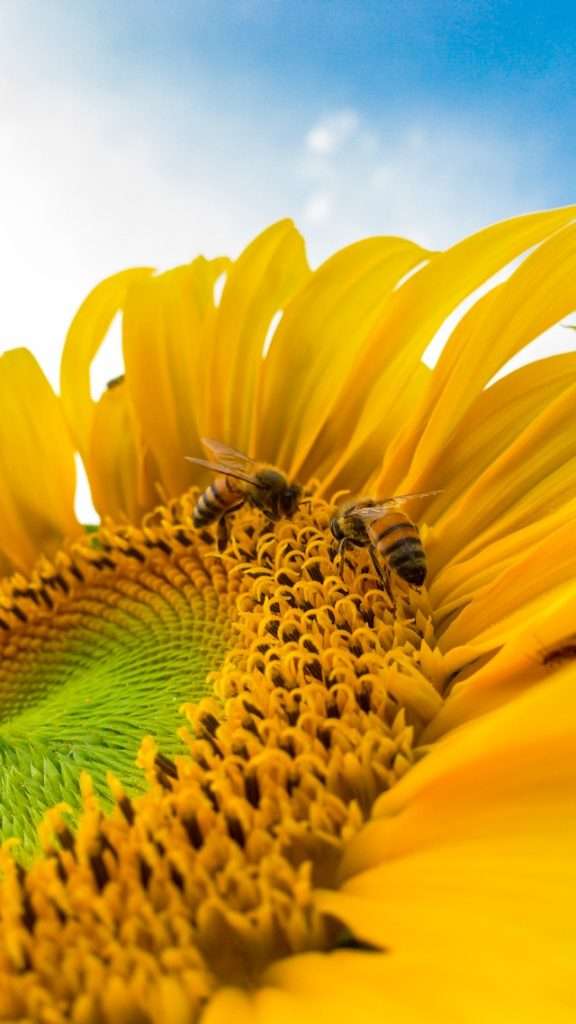
- Other Threats to a Bee’s Visual Acuity
Bees rely on their eyesight to navigate the world around them, locate flowers, and communicate with each other. In addition to pesticides, environmental factors impact their visual acuity.
1. Light pollution: The proliferation of artificial lighting can disrupt bees’ natural day and night cycles, disrupting their foraging patterns and compromising reproductive cycles.
2. UV radiation: Bees are highly sensitive to UV radiation and require it for some of their navigational and physiological processes. However, exposure to excessive UV radiation can damage their eyes, reducing their visual acuity.
Conclusion
Though bees may be small, they have a deeply intricate and highly evolved vision that allows them to navigate their environment with incredible precision. Through their sensitive detection of polarized light, their ability to observe shapes and movement, and their capacity to see in the ultraviolet wavelengths, bees have the ability to survive in variably changing conditions.
While it may be difficult to imagine what life looks like through the eyes of a bee, this article has explored the anatomy and capabilities of the bee’s eye in detail. Bees play an essential role in ecosystems, and understanding their vision is profoundly important for the conservation of this species.
FAQ
Can bees see red?
- While bees can see some colors – like blue, green, and ultraviolet – they cannot see red. This is because their eyes are not sensitive to the wavelengths of light corresponding to red.
What is bee color vision and why is it important?
- Bees can see colors in the ultraviolet spectrum that humans cannot. These colors, such as those found on flowers, help bees locate sources of pollen and nectar. Understanding what colors bees can see is vital for beekeepers as it helps them choose the right flowers to plant near their hives.
Can bees see motion?
- Yes, bees can detect motion. Bees have a heightened sensitivity to movement and can detect even the slightest changes in their surroundings.

